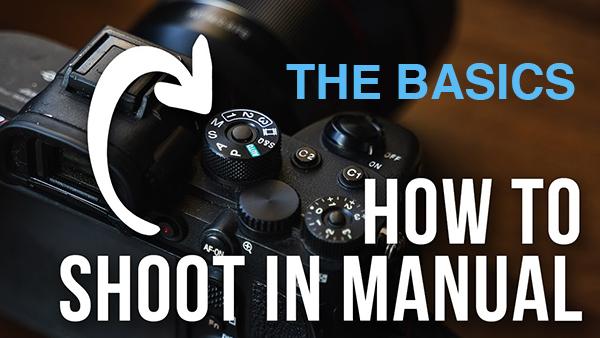Beginners Guide to Manual-Mode Photography (VIDEO)

We've been exploring a variety of exposure modes over the past month, explaining the benefits of Shutter Priority for avoiding camera and subject movement, how to use Scene modes in unfamiliar situations, and why one pro says, "Forget Manual Mode and use Priority instead."
Another recent video discussed when you may want to capture photographs in Program Mode even if you're not a beginner. But here's the deal: Manual Mode undeniably provides maximum control over the images you make. Unfortunately, many photographers shy away from this technique because they consider it too daunting.
Today's tutorial from landscape photographer Austin James Jackson corrects this popular misconception in barely 12 minutes, with a complete basic guide to shooting in Manual Mode. As he says, "While you can capture some great images in Aperture Priority or even Auto Mode, using full manual with give you the most control over the look of your images."

No matter your skill level, this episode covers everything you need to know about aperture, shutter speed and ISO, and how these settings interact, to unlock the power of Manual Mode photography. Jackson notes that, 'these settings are universal, and all photographers should understand how they affect their photos, regardless of the camera they use.
What constitutes a "perfect" exposure is in the eyes of the beholder—in other words, it a very subject matter depending upon the mood you want to create and the story you want to tell. Jackson demonstrates how Manual Mode can be extremely helpful for doing exactly that with a simple three-step process for choosing complimentary settings that deliver optimum results.
It's all about balancing aperture, shutter speed and ISO in the correct sequence, and Jackson explains how to determine which setting is most important for different types of subjects. As a landscape photographer, this is his typical approach: "First and foremost I want to keep ISO at 100 whenever possible."

As you'll see, what he does next step often depends upon whether he's shooting with a mirrorless camera or a DSLR. He typically chooses an aperture of f/8 or f/11 to maximum depth of field. Then he simply adjusts shutter speed until he arrives at a correct exposure for the effect he has in mind.
The foregoing is a rather simplistic summary of what you'll learn, and there's more details in the video that are worthy of consideration. But we're pretty sure that by the time you're done watching, shooting in Manual Mode will no longer seem out of reach.
And don’t forget to watch the tutorial mentioned above so that you'll understand when and how to shoot photographs in the timesaving and convenient Program Mode—even if you're not a beginner.
- Log in or register to post comments












































